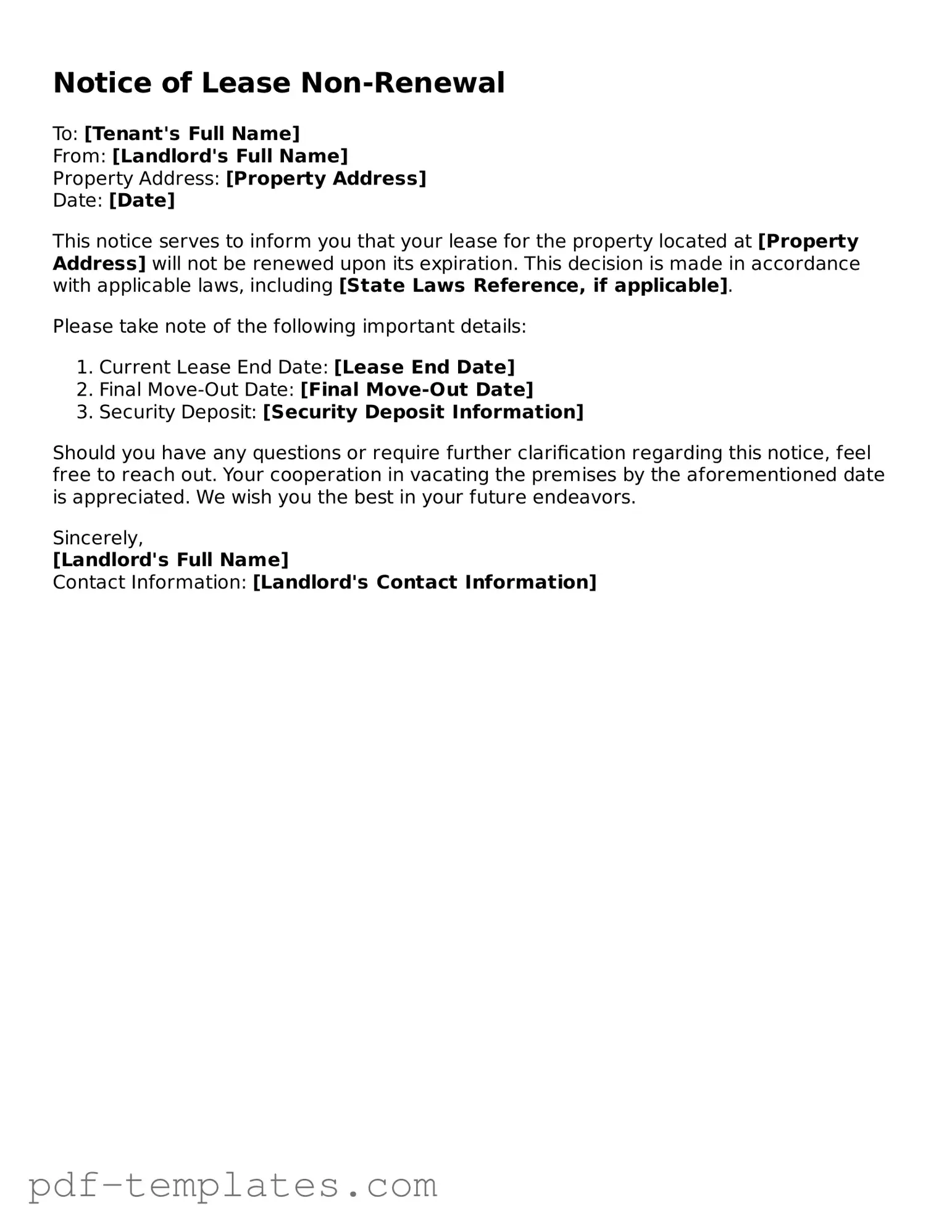The Notice of Lease Termination is similar to the Notice of Lease Non-Renewal form in that both documents serve to inform a tenant or landlord about the end of a rental agreement. While the Notice of Lease Non-Renewal specifically indicates that a lease will not be extended beyond its current term, the Notice of Lease Termination can be issued at any time to terminate the lease before its expiration date. Both documents require clear communication and typically include essential details such as the parties involved, the property address, and the effective date of termination.
Another related document is the Eviction Notice. This notice is often issued when a tenant has violated the terms of the lease, such as failing to pay rent. Like the Notice of Lease Non-Renewal, it formally communicates an end to the tenant's right to occupy the property. However, the Eviction Notice usually involves a specific violation and may lead to legal proceedings if the tenant does not comply. Both documents aim to ensure that all parties are aware of their rights and responsibilities regarding the rental agreement.
The Lease Renewal Agreement also shares similarities with the Notice of Lease Non-Renewal form. While the latter indicates that a lease will not be renewed, the Lease Renewal Agreement outlines the terms under which a lease will continue for another term. Both documents require clear communication between the landlord and tenant and often involve negotiations regarding rent and other conditions. They are crucial for maintaining a transparent relationship and ensuring that both parties understand their commitments.
The Rental Application can also be compared to the Notice of Lease Non-Renewal form. Although the purpose differs, both documents play a significant role in the rental process. The Rental Application is submitted by prospective tenants to express interest in a property, while the Notice of Lease Non-Renewal informs tenants that their lease will not continue. Both documents are essential in managing the expectations and responsibilities of landlords and tenants, ensuring that the rental process runs smoothly.
For those navigating the complexities of leasing in Florida, it’s crucial to familiarize oneself with various agreements and notices, including Lease Agreements and modifications. Understanding these documents ensures that both landlords and tenants are protected. For further assistance and to access templates, visit Top Forms Online, which provides valuable resources for lease agreements tailored to Florida's regulations.
Lastly, the Move-Out Notice is akin to the Notice of Lease Non-Renewal form in its function of signaling an end to the tenancy. A Move-Out Notice is typically provided by tenants to inform landlords of their intention to vacate the property. While the Notice of Lease Non-Renewal is initiated by the landlord to inform tenants that their lease will not be extended, both documents require timely communication and often specify important details, such as the move-out date and any obligations regarding the condition of the property upon departure.
